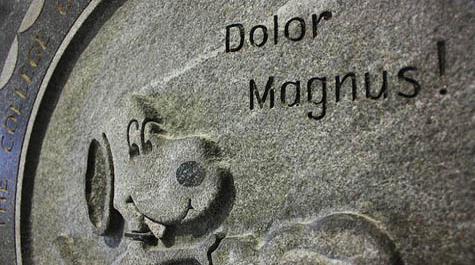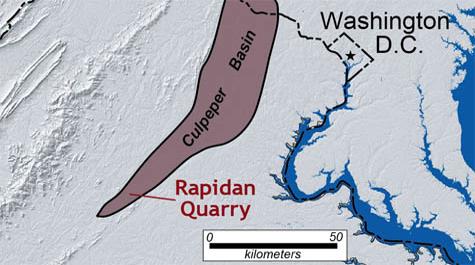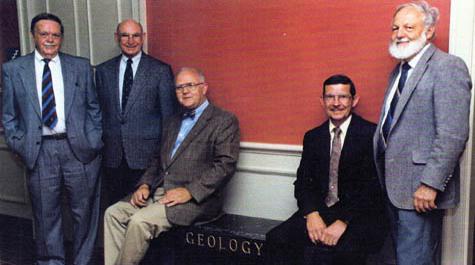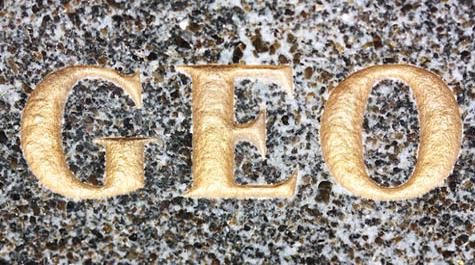A Diabase Dog
The storied history of Geology's diabase plaque
By Ari Hartmann
Perched on the wall next to McGlothlin-Street room 228, at the crossroads of the Geology Department’s two main corridors, resides a curious rock plaque depicting Snoopy, the famed Peanuts cartoon character, flanked by the mysterious Latin words, "Dolor Magnus!" In all likelihood, you haven’t given this quirky relic much thought, but perhaps you should. The Snoopy plaque celebrates the founding of the Geology department, and links two dynamic periods in Virginia’s history: the Mesozoic Era and the 1960's.
During the former, the Culpeper basin developed in the region that would become northern Virginia. Late in the basin’s history, rift sediments were intruded by mafic magmas that crystallized into diabase dikes and sills in the subsurface and basalt flows on the surface. These igneous rocks formed as Virginia’s crust thinned and ripped apart, labor pains at the birth of the Atlantic Ocean.
Some 195 million years later William & Mary alum R. Lee Aston (’50) began quarrying diabase (black granite in the trade) for dimension stone near Rapidan. A proud alum and geologist by trade, Aston generously offered the recently founded department an inaugural plaque made from this distinctive stone. But what to engrave on the magnificent mafic slab?
Unsurprisingly, that aspect of the story is entirely of student origin.
After a particularly difficult Mineralogy exam, one irreverent student named Dave Rohr (now a professor of geology at Sul Ross State University in Texas) drew Snoopy on a chalkboard with a screw going through him, perhaps in some attempt at comic catharsis. This absurd icon struck a chord with the geology student body. Soon scrawled upon every doorpost and every gate, the "screwed-Snoopy" became the unofficial mascot of the department.
So when Lee Aston offered his diabase plaque, students and faculty asked that it be engraved with Snoopy’s image. A Latin translation approximating "good grief" (though more accurately translated as "great sadness") was furnished by the Classical Studies department. The plaque was to be placed proudly outside Camm Hall, the original home of the Geology department. And the geologists were happy.
William & Mary administration, however, was not quite so pleased. The administration viewed the Snoopy plaque as a seal unbefitting a venerable institution like William & Mary. Controversy ensued; miffed memos of misunderstanding circulated, administrative brows furrowed, and retractable pens anxiously clicked and unclicked. A compromise was eventually reached and the plaque moved inside the department. The geologists were happy again.
In 1995, the Geology department moved from Small Hall to the newly constructed McGlothlin-Street Hall (then Tercentenary Hall) with the diabase Snoopy in tow, as always. On that occasion Dr. Aston once again provided for the department: matching lamps and a truly monumental diabase bench dedicated to the department’s founding members for the front foyer of McGlothlin-Street Hall. Next time you pass these rock relics, take a moment and consider both the geologic and human history – academia, pop-culture, and deep-time colliding humbly in the form of a cartoon dog and matching furniture.


















